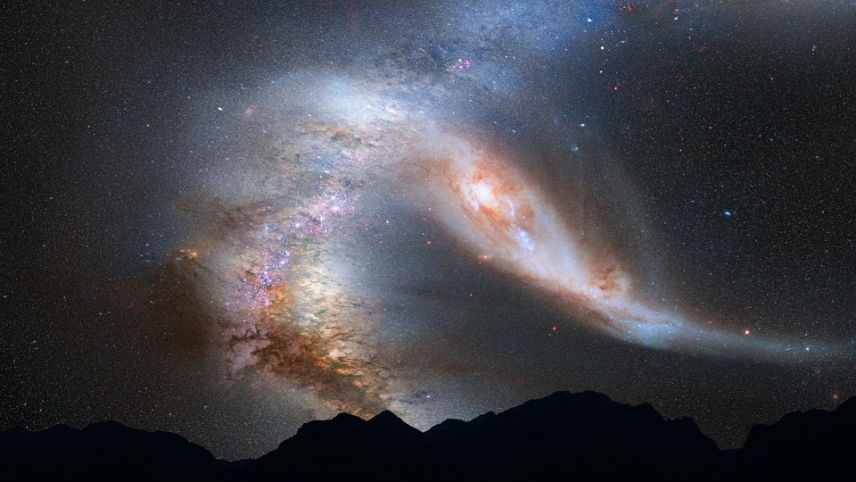 The discovery marked a watershed in the history of cosmology, since it showed that the expansion of the universe was accelerating due to the repulsive pressure exerted by dark energy. Nothing is known of its nature, except that it is inherent to space itself and interacts only with gravity, which it opposes. A paper published a few days ago in Nature Astronomy reports that some properties governing the equation of state of dark energy have varied over time. More specifically, the relation between the pressure exerted by dark energy and its density has changed over the history of the universe.
The discovery marked a watershed in the history of cosmology, since it showed that the expansion of the universe was accelerating due to the repulsive pressure exerted by dark energy. Nothing is known of its nature, except that it is inherent to space itself and interacts only with gravity, which it opposes. A paper published a few days ago in Nature Astronomy reports that some properties governing the equation of state of dark energy have varied over time. More specifically, the relation between the pressure exerted by dark energy and its density has changed over the history of the universe.
One of the team responsible for this discovery is Antonio J. Cuesta, lecturer at UCO, who took part in a study led by Dr. Gong-Bo Zhao of the National Astronomy Observatory of China and the Institute of Cosmology and Gravitation, University of Portsmouth, UK. The team, part of the international Baryon Oscillation Spectroscopic Survey (BOSS) initiative, came to this conclusion after analysing a range of cosmological data, including information on cosmic microwave background radiation, present throughout the universe and known as the “Big Bang Echo”.Â
As Cuesta stresses, obtaining the results “was no easy task”. It required an absolutely precise measurement of the rate at which the universe was expanding at various points in its history, by combining information from very close objects and distant objects in order to reconstruct the different rates of expansion. Although the perceived variation in the properties of dark energy may be due to artificial fluctuations in data acquisition, this – according to Cuesta – appears unlikely, given the “quality and quantity” of the cosmological data obtained.
This new concept of dark energy as a dynamic, changing force has given rise to a number of still-inchoate theories seeking to account for the phenomenon and to explore its potential implications. One consequence is that certain findings, if confirmed, will add weight to the “Big Rip” hypothesis postulated by certain theorists as the fate of the cosmos: if the dark energy pressure/density ratio were in future to stabilise at values of less than -1, galaxies would be torn apart, and the universe would be reduced to mere shreds in a cold, dark void.
This discovery not only paves the way for new cosmological theories but also marks a giant step towards solving one of the great mysteries facing mankind: the origin and fate of the universe.
References
Gong-Bo Zhao, Marco Raveri, Levon Pogosian, Yuting Wang, Robert G. Crittenden, Will J. Handley, Will J. Percival, Florian Beutler, Jonathan Brinkmann, Chia-Hsun Chuang, Antonio J. Cuesta, Daniel J. Eisenstein, Francisco-Shu Kitaura, Kazuya Koyama, Benjamin L’Huillier, Robert C. Nichol, Matthew M. Pieri, Sergio Rodriguez-Torres, Ashley J. Ross, Graziano Rossi, Ariel G. Sánchez, Arman Shafieloo, Jeremy L. Tinker, Rita Tojeiro, Jose A. Vazquez & Hanyu Zhang. Dynamical dark energy in light of the latest observations. Nature Astronomy 1, 627–632 (2017) doi:10.1038/s41550-017-0216-z
Â
Â


